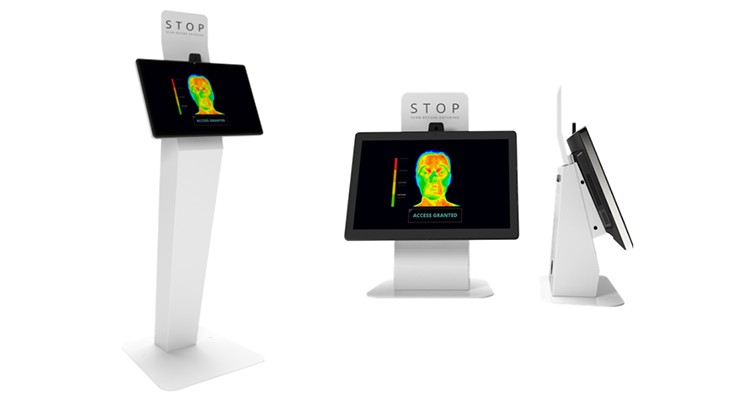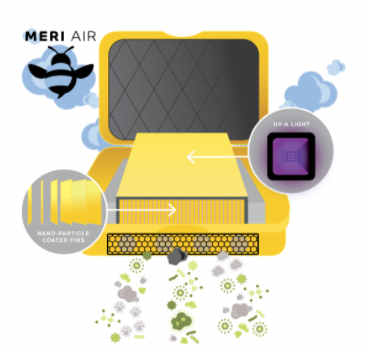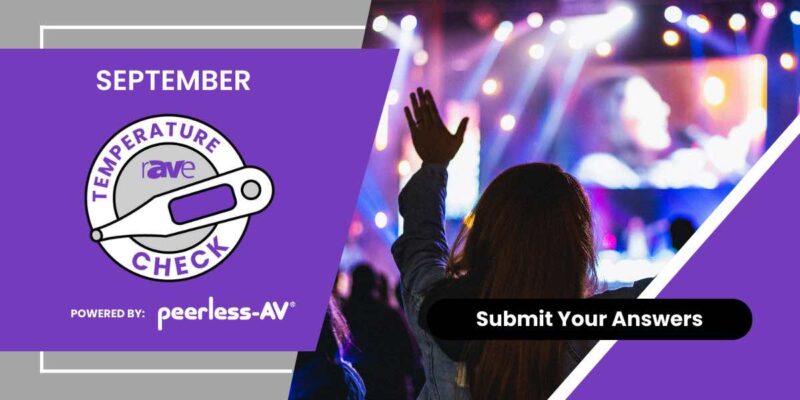Devices Developed Due to COVID-19
Since this pandemic is new to all of us and technology is being designed to aid in coping with this relatively horrible situation, I thought some information and things I have observed or read about over the past 18 months would be helpful. I am not specifying one technology over another nor one vendor over another. I am instead bringing up these different pieces of technology because I think it’s important to highlight how COVID-19 has encouraged innovation in our industry.
I remember the first time I entered a building (wearing a mask) around the beginning of the pandemic and someone approached me with a thermometer in hand. I immediately backed away; no one had ever taken my temperature on my forehead before (without saying anything like, “Stand still, I need to take your temperature with this handheld device,” or something to that effect). That has since changed a little bit.
Recently, technology has been developed to enable more self-service as safety is now a main concern for most people. Although there are more human-to-machine (such as kiosks) or nontouch applications (such as QR codes on restaurant tables), customers still expect ease of use, speed and accuracy.
Some of the self-service devices include virtual receptionists, wayfinding kiosks, check-in kiosks, temperature-screening kiosks and contactless touch screens. This type of automation was also developed to reduce stress and anxiety for employees, guests and visitors (depending on the type of business — hotels, offices, etc.). Some of these devices even meet FDA guidelines for nonmedical screening purposes as well as ADA compliance. They can adapt the end user experience to meet customers changing behavior, easy to keep clean and germ-free.
A virtual receptionist can welcome visitors, empower them to check in quickly/alert the right employees to greet them, provide a consistent interactive experience that’s also an extension of your corporate identity and free up administrative time for hospitality staff that they can then spend on making guests feel special.
Wayfinding kiosks have become critical for buildings, malls, arenas and stadiums, stores, etc. as you just can’t walk around a building anymore due to new guidelines and protocols. The quality of the information and 3D map drawings provided on the kiosk (actually on a display built into the kiosk mechanism) will aid people in finding the right location quickly and efficiently.
Fever Detection
Some temperature-screening kiosks, such as those from Olea Kiosks (see below), use an algorithm for object heat and fast detection temperature accuracy (+/- .5 degrees Celsius or about +/- 17 degrees Fahrenheit). They can scan people at 20” to 39” from the kiosk and enable safe social distancing methods. Most of them are safer and more efficient than using a human resource to screen temperatures, and they can also control access to your facility from a potentially high-risk individual, utilize Android OS and UI, include beeping alerts if temperature exceeds pre-set temperature setting, onboard memory to store temperature screening records. Some are on the desktop and others are freestanding (see picture below), some use sensors and/or cameras, some can be used with or without a network connection.

Irvine temperature-screening kiosks by Olea.
Additional features include facial recognition, text/email notification when an individual’s temperature exceeds the configured threshold, reporting — the log of scans can be stored on the tablet or from a cloud application and new functionality can be delivered via software (or firmware) updates.
By the way, regarding “normal body temperature,” we have been told by our doctors that 98.6 degrees Fahrenheit is the average internal temperature for most people. Well, according to WebMD — for a typical adult, body temperature can be anywhere from 97 F to 99 F. Your temperature doesn’t stay the same all day, and it will vary throughout your lifetime. I started to pay more attention since I was getting more readings from having on-site meetings in different buildings over the past 18 months and my average body temperature is actually 97.2 F.
Virus Elimination
One of the more interesting devices I have come across is the MERI AIR device. Per its website,
The MERI AIR system utilizes the natural process of photocatalysis to eliminate dangerous materials from the air. The MERI AIR unit draws in air with a simple electric motor and fans. The air glides between nanoparticle-coated fins, where a UV-A light triggers the photocatalysis process oxidizing all remaining airborne pathogens, including the COVID-19 virus. Simple water vapor and trace carbon dioxide are the only byproducts, which pass out of the exit port as tiny puffs of condensation. The device can cover 3,000 cubic square feet per hour to effectively reduce the transmission of disease and toxins for all types of working spaces, including production facilities, corporate offices, educational facilities, entertainment venues, live/workspaces, restaurants, retail stores, sports facilities and more without the need for special ventilation. Filter-based systems only capture impurities and require accessory replacement. MERI AIR eliminates impurities at the molecular level and vaporizes all the waste. There is nothing to clean, the waste is water. The suitcase-sized unit is completely self-contained, it uses a quiet, integrated cleaning process and requires only an electrical outlet for use. The rugged case makes it easy to transport and use in any public space.

The MERI AIR.
Other devices include MERV and HEPA air purifying filters (the effectiveness is usually listed on the filter package). I have also learned that UV-C-based cleaning, such as the UV-C Sanitizing Light, while effective, are hazardous to humans and animals, for those of us who have pandemic puppies, not a good idea.
I hope this little bit of information has been helpful. My suggestion is to do your research in order to make an educated decision on purchasing/using these types of devices.
Here is my latest list of terms that include those used in this article.





